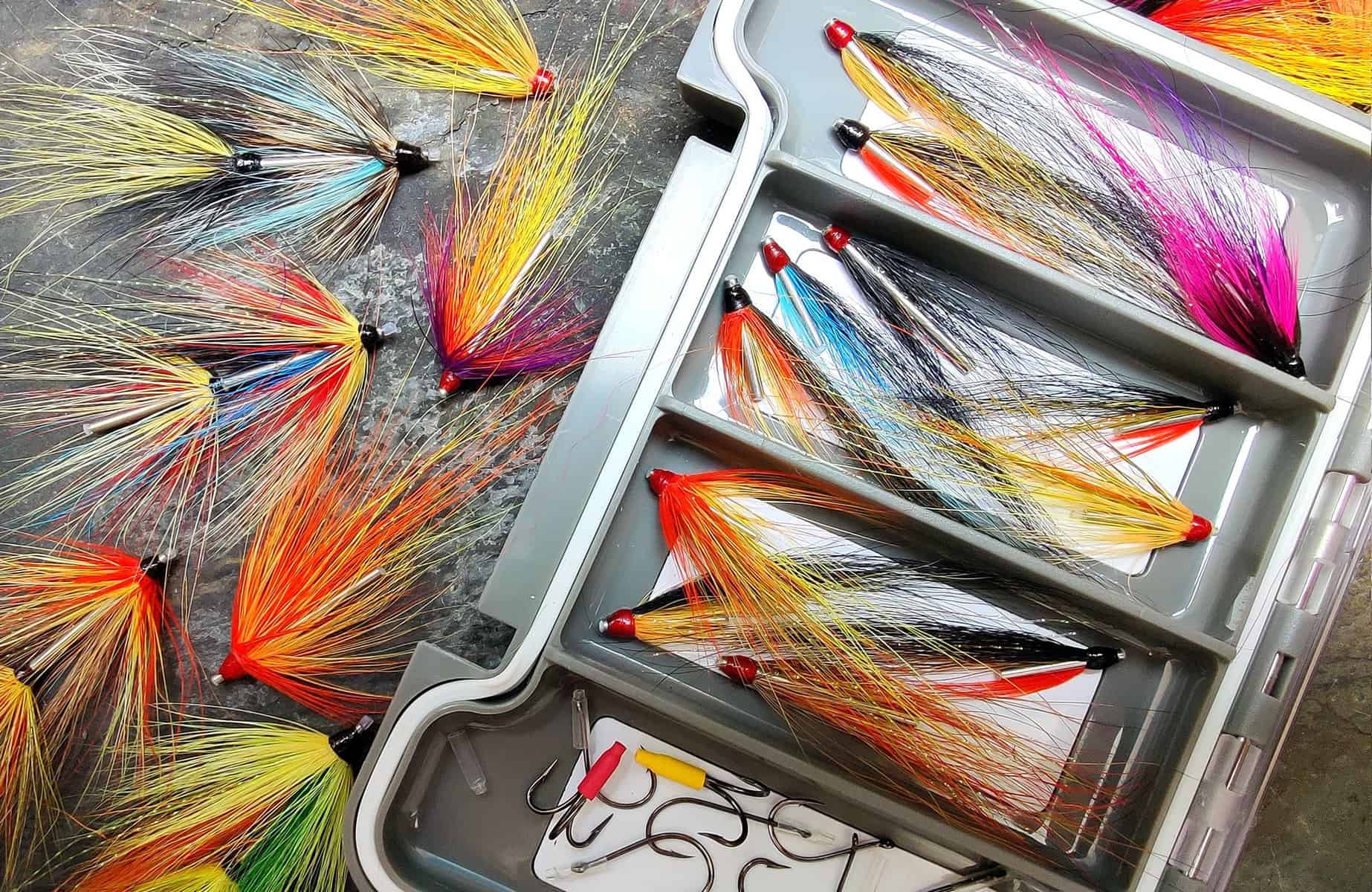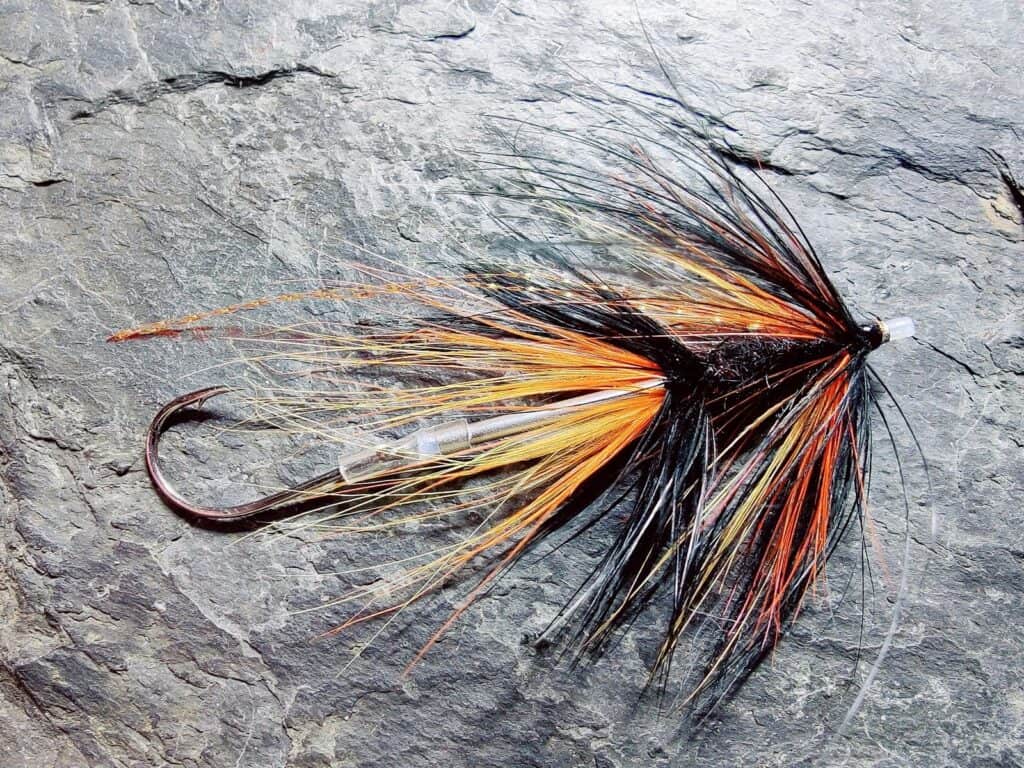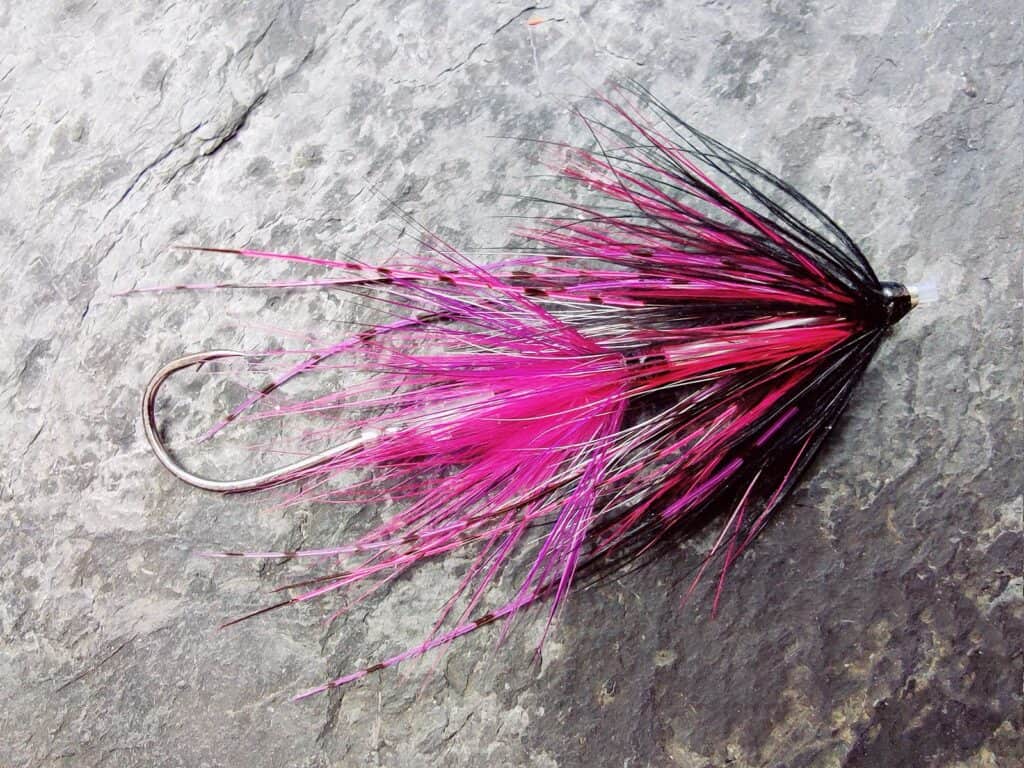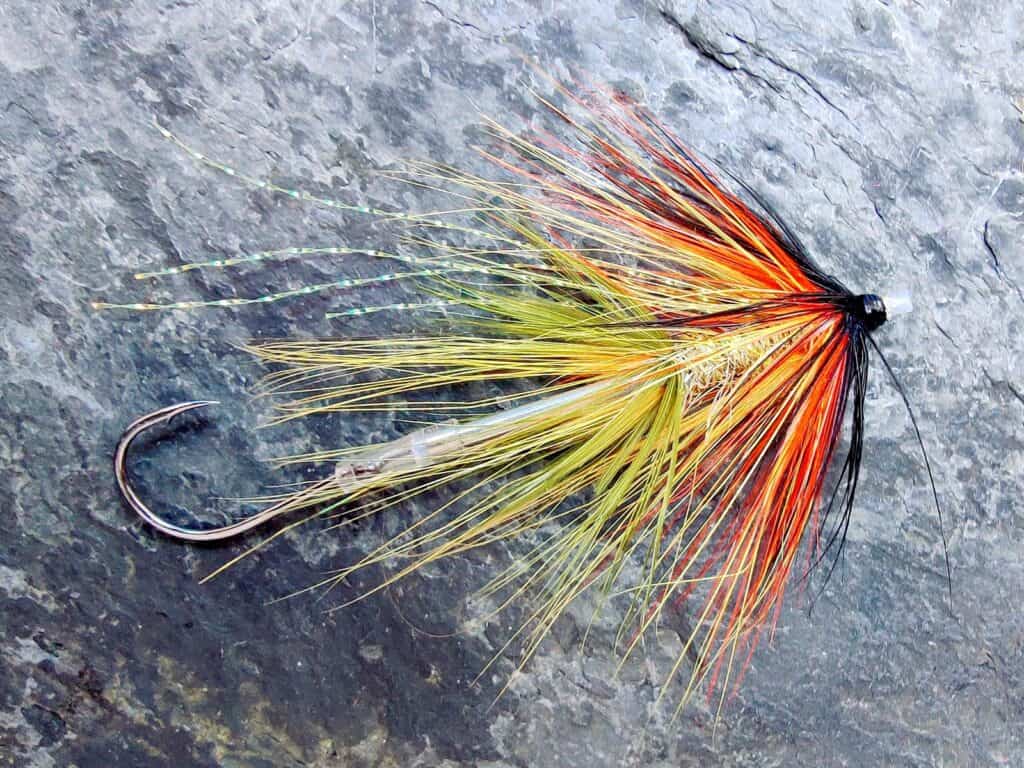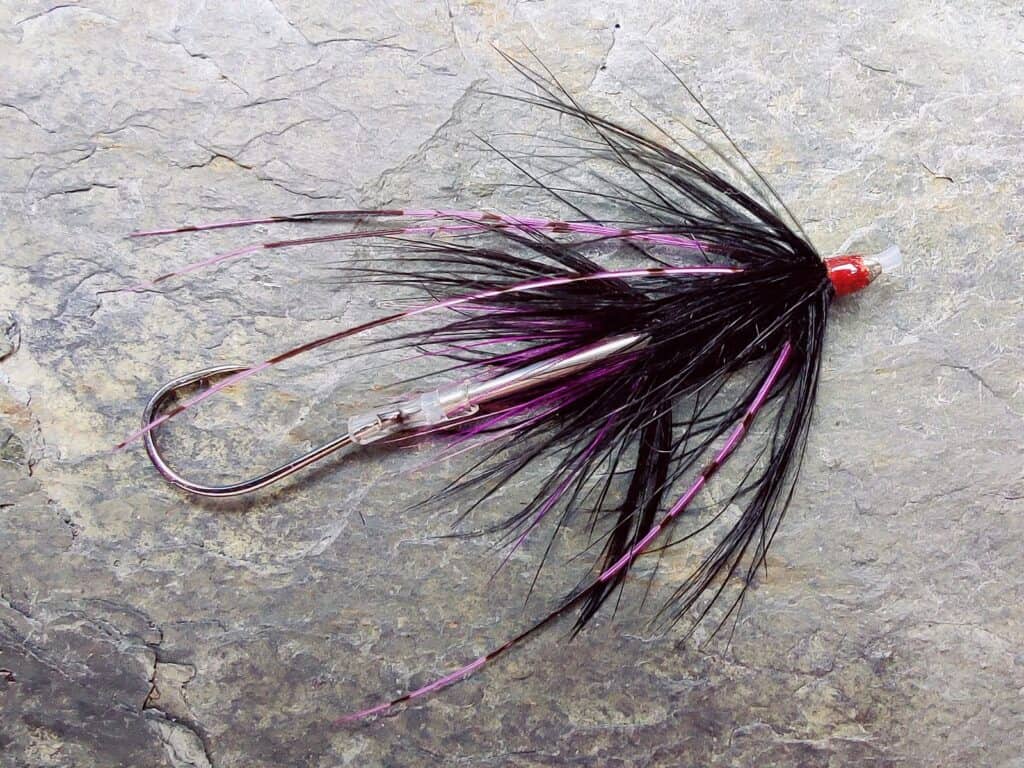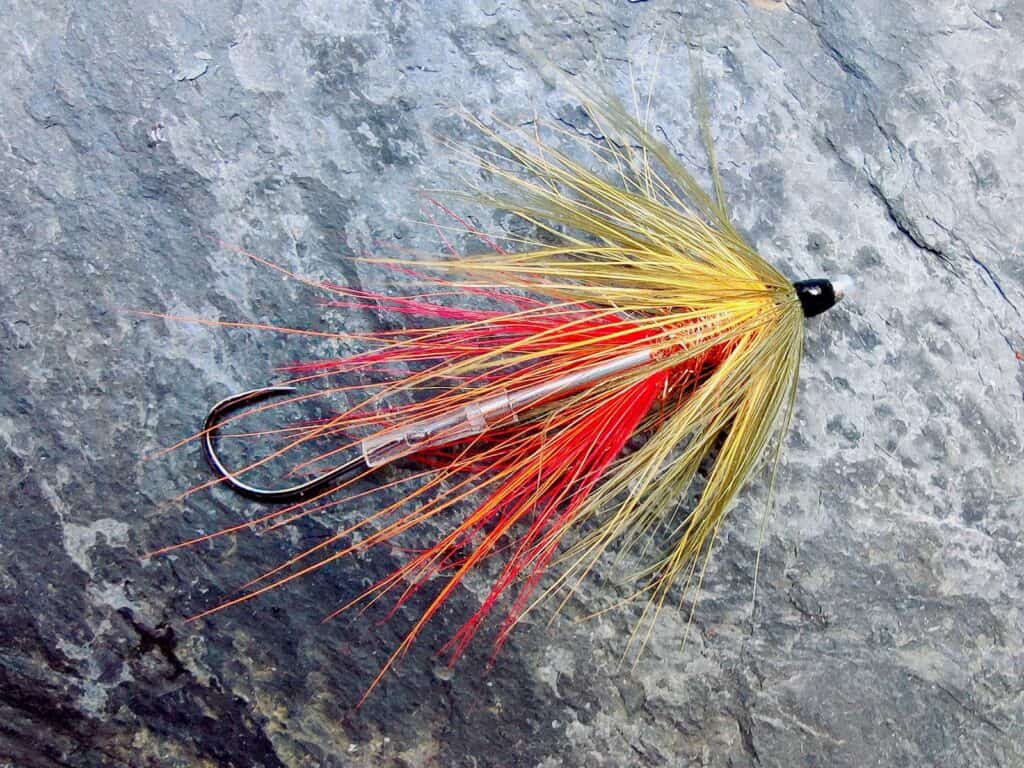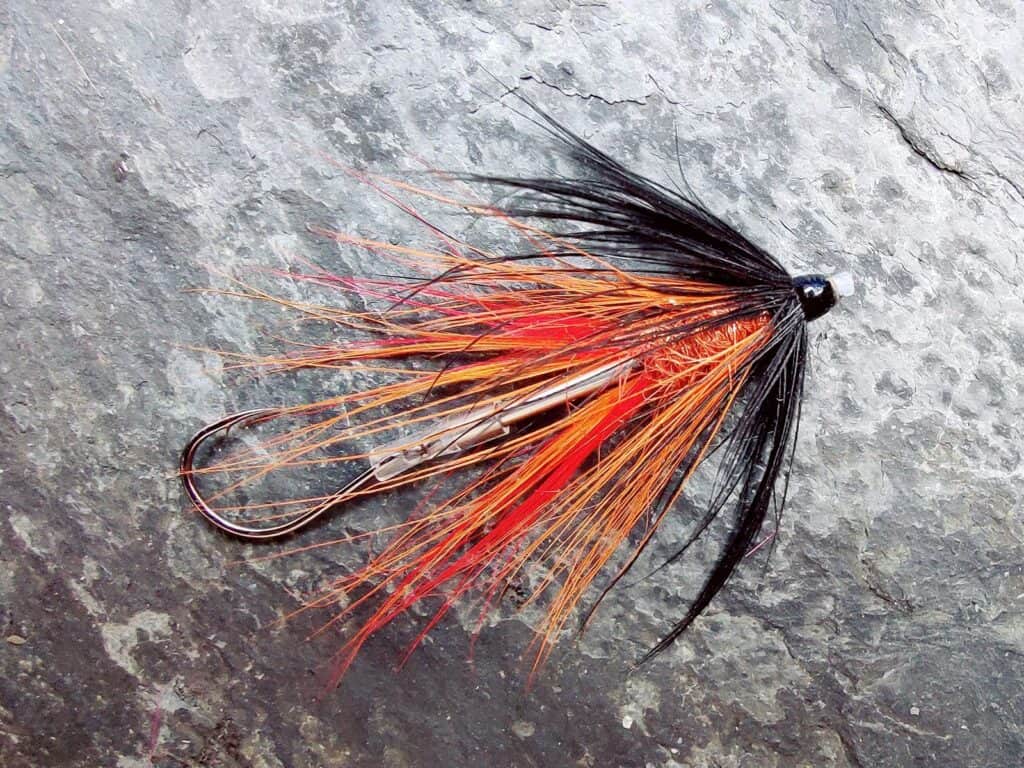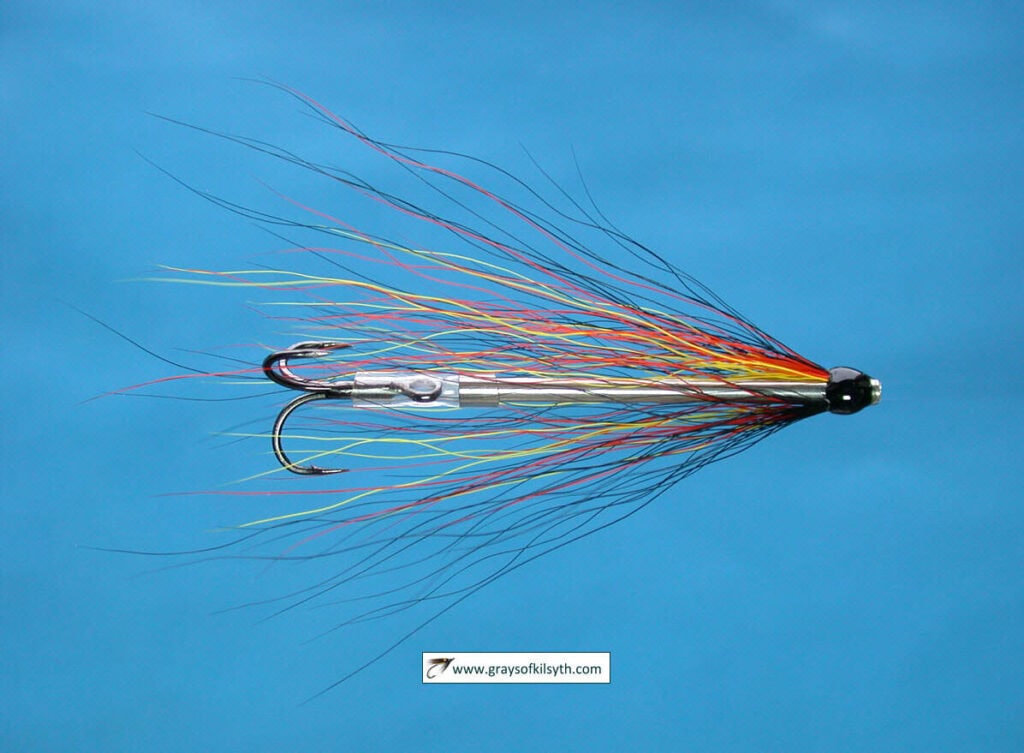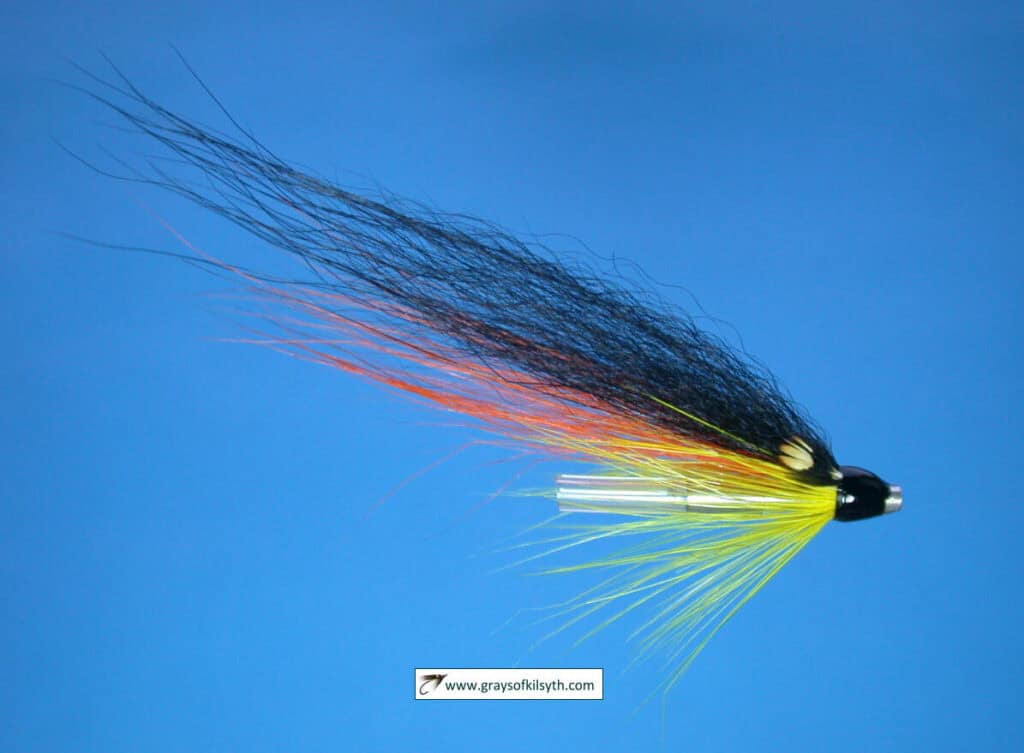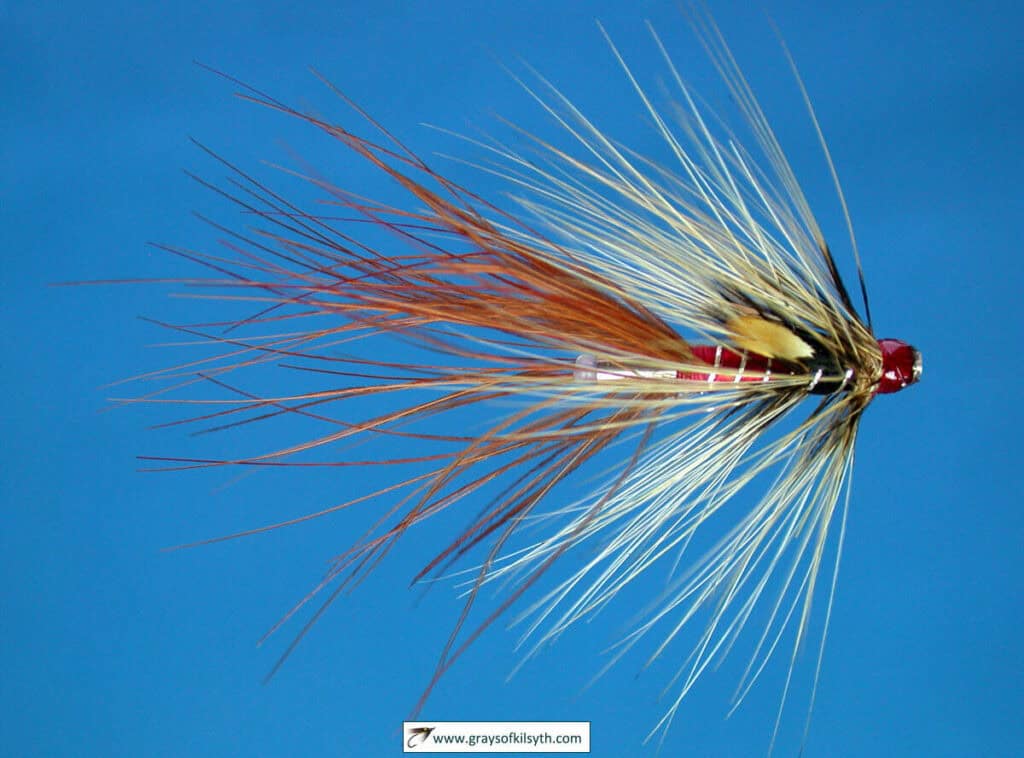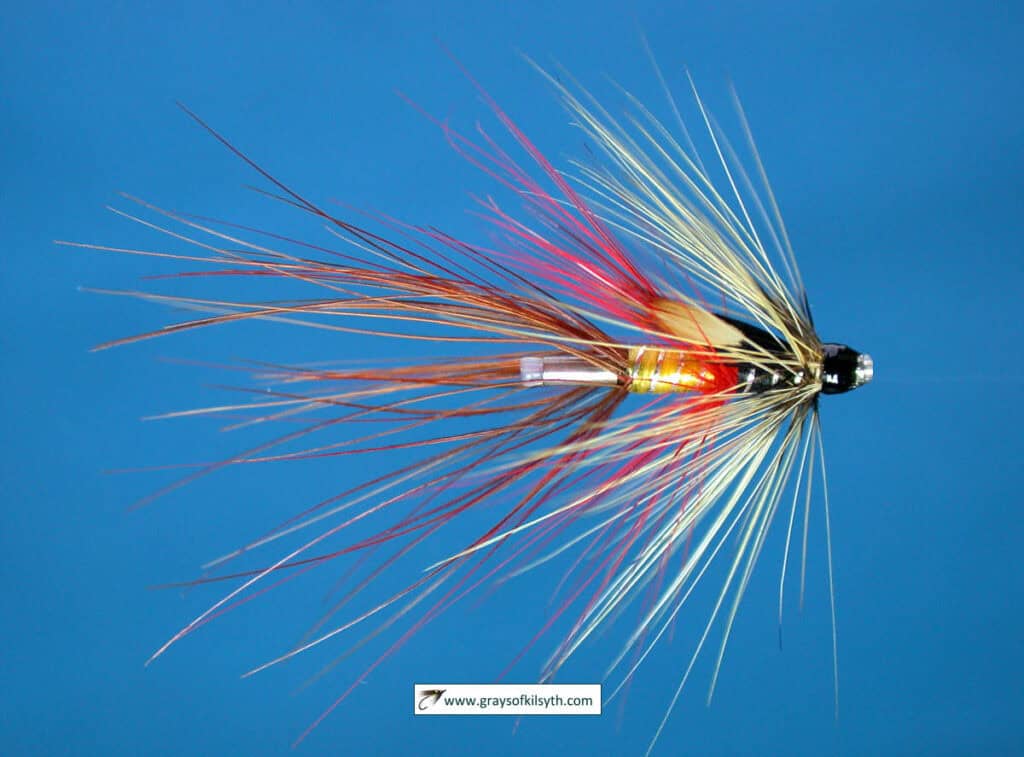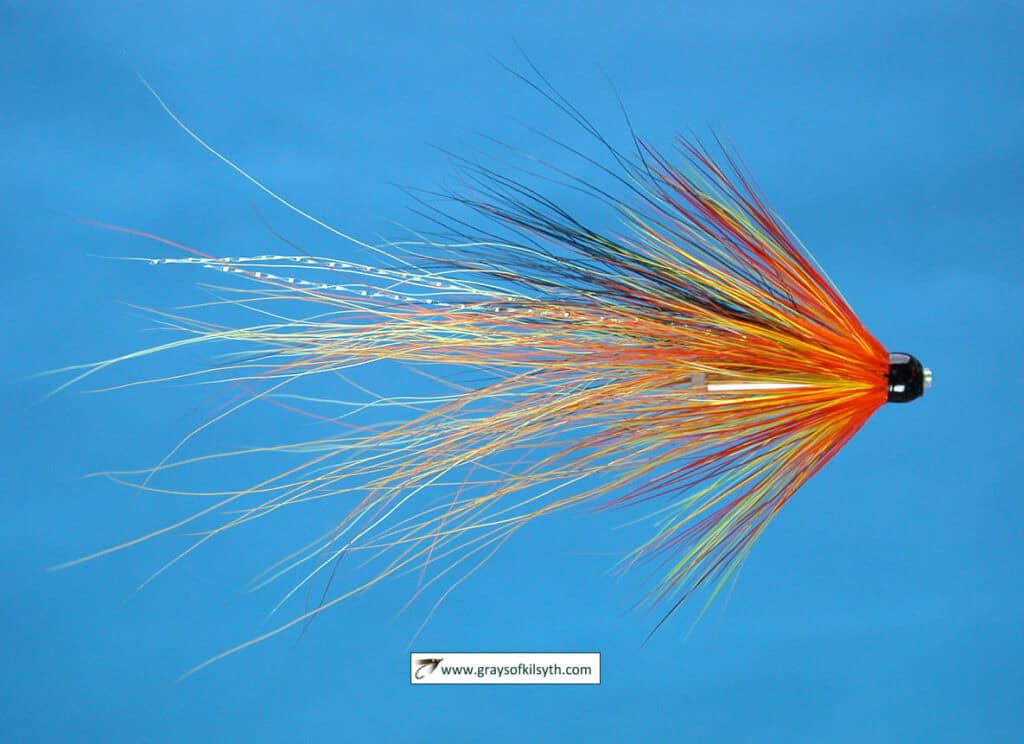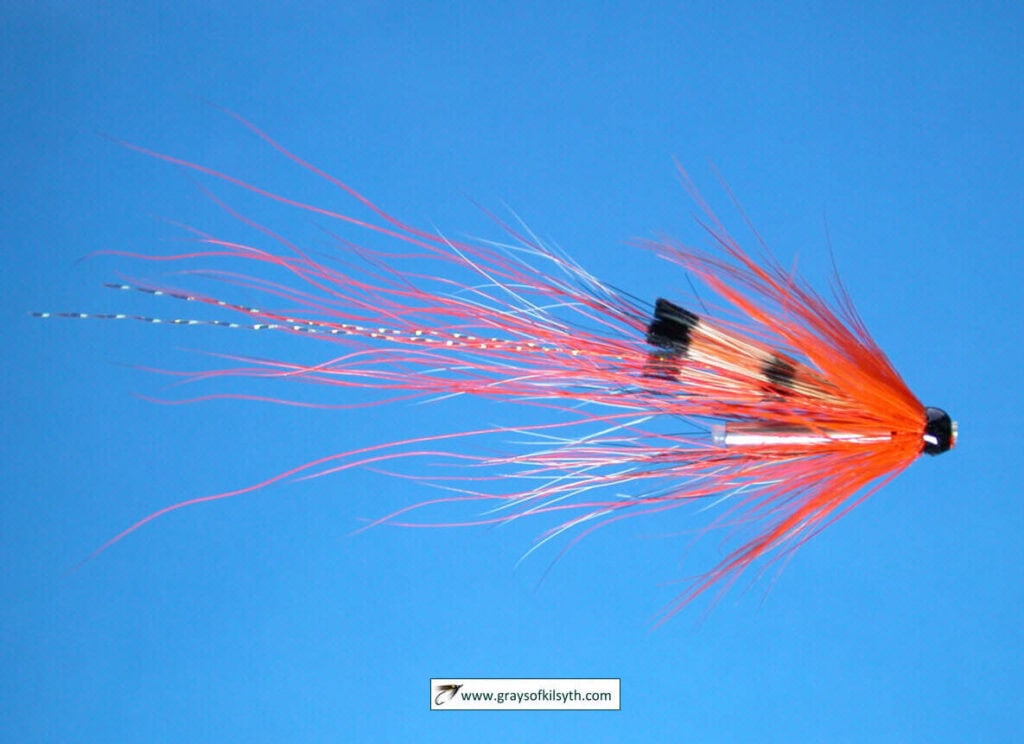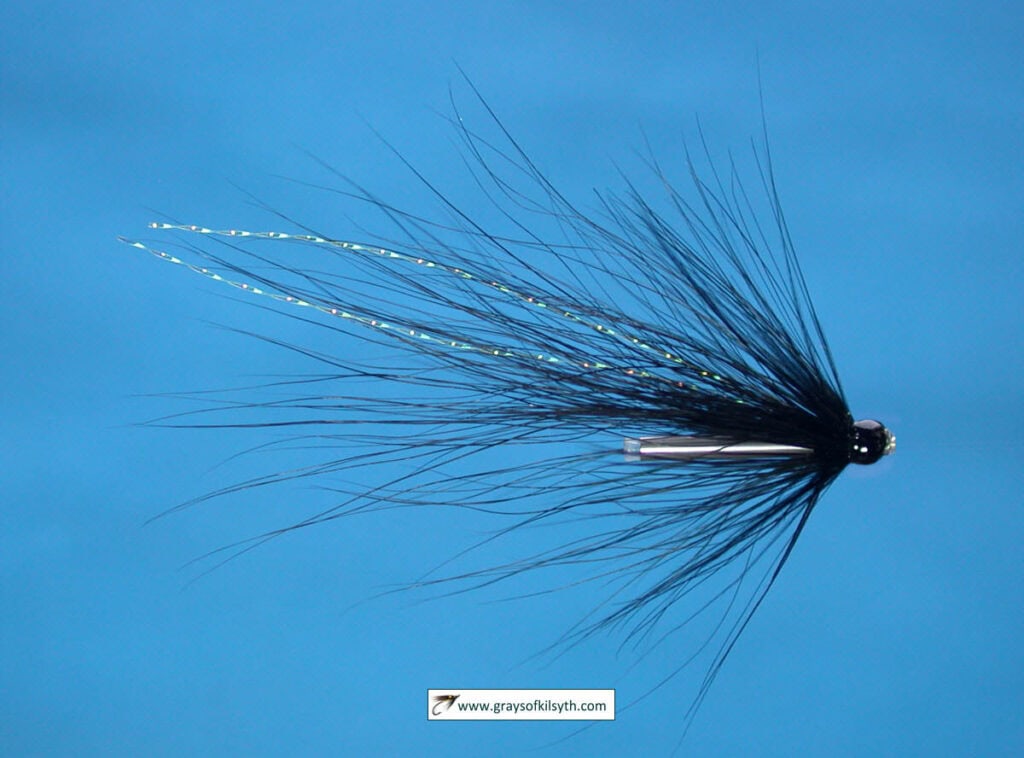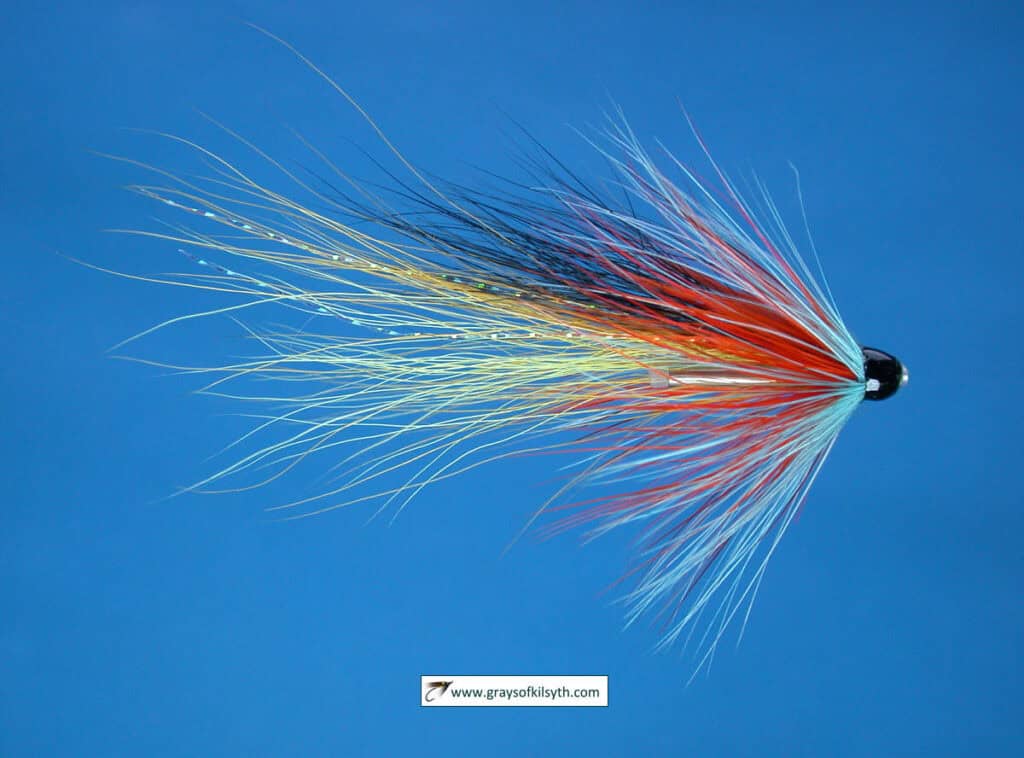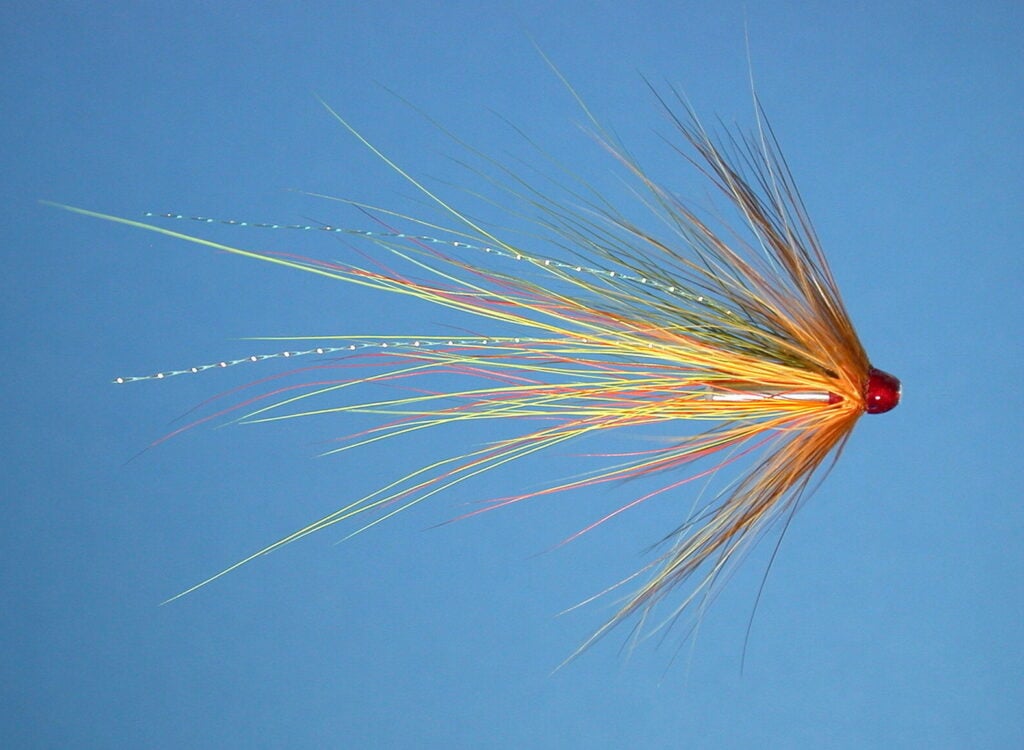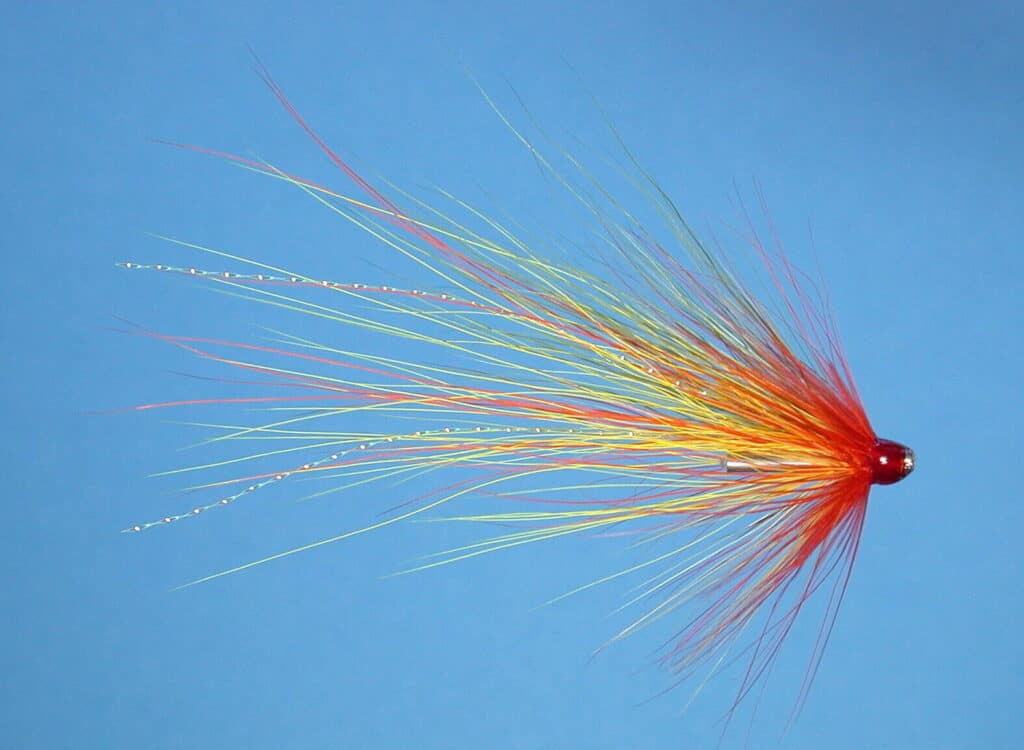Salmon Tube Flies
Tube flies have been in use for salmon fishing, in Europe for Atlantic salmon and in North America for Pacific salmon and steelhead, for many decades. They have also proven popular for sea trout night fishing. Recent years have seen the development of a wide range of tubes made in a variety of sizes and shapes, from a whole range of materials, including various plastics, aluminium, brass, copper, stainless steel and tungsten, together with additional components such as beads, coneheads, turbo discs, spinheads, swing tubes, knot guards, diving vanes and skullheads, to name but a few.
A whole range of salmon flies, in a variety of styles, weights and lengths, may be simply dressed on stainless steel needle tubes, e.g. long-tailed Scottish Shrimps (such as the variants of Ally’s Shrimp and Cascade illustrated below) Irish Shrimps (see Bann Special and Curry’s Red Shrimp variants below), Willie Gunns, mini tubes or long winged Scandinavian style flies. The stainless steel needle tube is just one of many modern alternatives ( varying in shape, weight, density, length and colour) available to the tube fly tyer. The needle tube, being made from fine stainless steel tubing (the kind used in hypodermic needles), lies between copper and aluminium in density. It will therefore sink more slowly and less deeply than copper but more quickly and more deeply than aluminium. The slim diameter of the needle tube creates a lighter tube, more easily cast than the thicker, heavier copper nd brass tubes. The silver stainless steel body can also be left undressed , making them very simple to dress. A few salmon tube fly examples are shown below.
For more about Needle Tubes and Needle Tube Flies, see Needle Tubes
